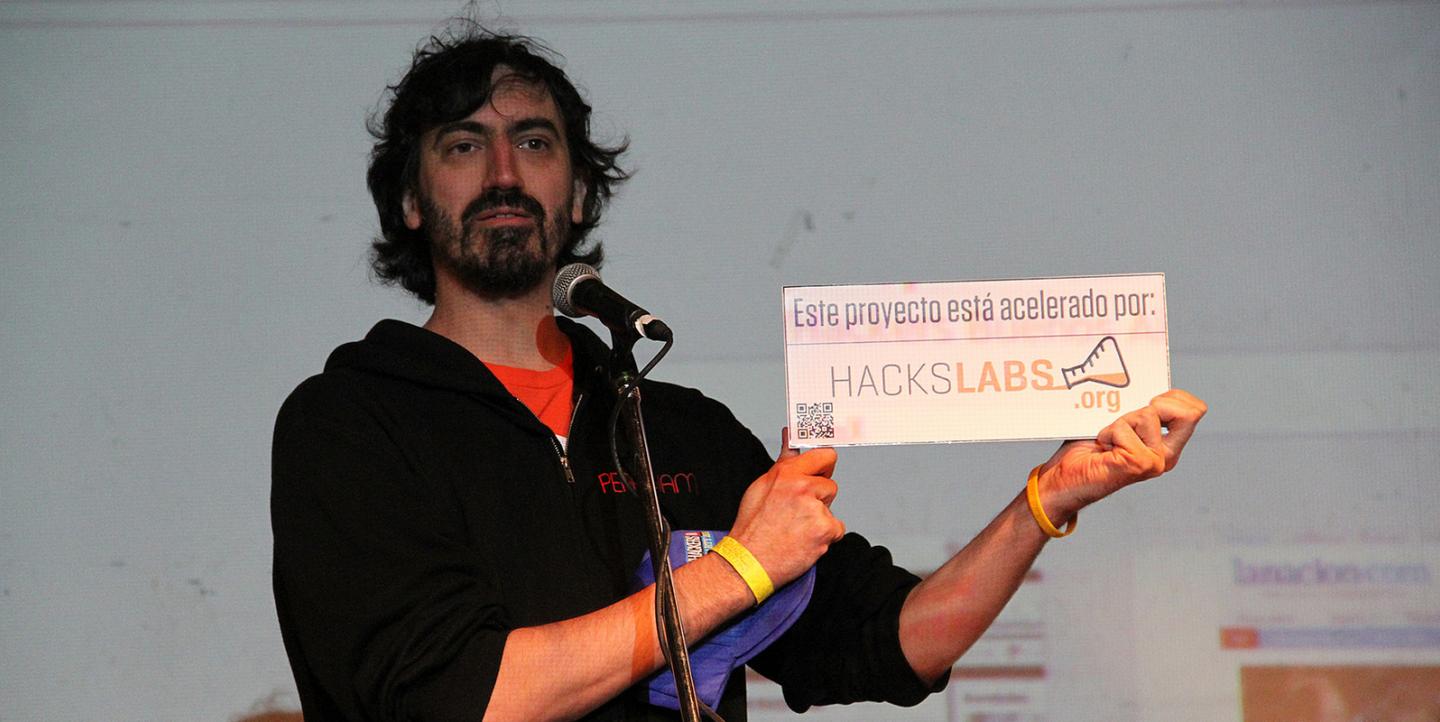Doing data journalism in Latin America is a major challenge. Newsrooms in this part of the world have taken longer than imagined to implement interactive teams for a number of reasons, including cultural habits, limited technical capabilities, lack of vision and inadequate ecosystems. Media executives are only now beginning to understand the new roles appearing in newsrooms.
Two years ago, I founded Hackslabs, the first data journalism accelerator in Latin America. The original idea was to help teams of interactive and data journalism entrepreneurs escalate their products, connect with media outlets and advance their innovations. After a first round of 10 projects were launched in 2014, with major funding from the World Bank and additional support from the Knight Foundation, HacksLabs announced in 2015 that it would seek to work with eight new projects in various Latin American countries. The plan was to give them US$10,000 grants as well as mentorship to help advance their projects.
With this second phase, we were targeting more developed teams looking to improve products that could be used in newsrooms. At present, there are four projects being developed with support from the Avina Foundation and Hivos that will be released in a couple of months.
Our approach is the opposite of large international media working with teams of data journalists: Marc Lavalle, editor of interactive news at The New York Times, told me that its developers have around 50 projects, which are difficult to implement outside the newspaper, because the idea behind these projects is to add value to stories that are being published in the Times.
In Latin America, opportunities are different and the chances of working on social-impact interactive projects within the media are very scarce. So we decided to finance projects that could be replicated and had the potential to generate pan-regional communities in search of innovation, even if they were outside the media.
That’s how we decided on these projects:
- Yo Quiero Saber, an interactive game that allows voters to discover which candidates share their views
- Cuidados Intensivos, a platform that helps Peruvian citizens report health issues
- Cargografías, an interactive site that presents the entire political history of electoral candidates
- Yo Intervengo, a mobile tool that empowers citizens to track public works projects in Colombia
- El Chequeador, a crowd-sourced fact-checking platform
- Podero Editor, a customizable tool of Poderopedia to map the relationships among elites in a country or region
- Salud Migrante, which analyzes health data of migrants in the United States
- La Borra, a project of visionary Andy Tow: an aggregator that analyzes and predicts election results. It’s been built for Argentina but has a great potential for scalability
We received a large number of applications on issues such as misuse of public funds, conflicts of interests between corporations, money laundering, theft and tax evasion.
There is a lot to be done. In the coming months we hope to renew and strengthen our previous commitments and announce support for additional projects that are currently underway. But first, we’ll take a break to reflect on the lessons we have learned in the process of assembling data teams on digital and traditional media in the past year.
Tips to keep in mind when building data teams
- Changing the workflow in a journalistic environment is a slow process; it involves modifying customs and habits
- You need to think about new jobs or positions that newsrooms usually do not take into account, such as:
- Who is going to be the project CTO or technology manager. If the person who will lead the project from the technological standpoint is not clearly defined, it is highly likely that the project will fail
- If you are not planning to incorporate someone with knowledge of user experience (UX/UI), it’s very likely that no one will be able to use what journalists and programmers build; in the interactive world, readers are users
- Sustainability: What happens once the development is completed? Who will maintain the code? Who will document it? Where will it be saved?
-
Build in stages: Do not think about building before planning how you are going to shape the first floor and assemble the door
Insights for improving the quality of investments and grants to accelerate impact
Beyond the projects we finance and will continue to fund, we found some weaknesses in the innovation ecosystem.
- Funding is not enough: the transfer of knowledge, skills mentoring and hands-on support improve the chances of a project to develop and move on.
- Mentorship is not enough: mentoring is a good start to know where to look for solutions, but in order to focus, interactive teams often need specific support in implementing and troubleshooting new technologies.
- Having a team is not enough either. We need good, strategic partners or ambitious leaders eager to generate impact. And they also need to be flexible.
- Innovation is a mental concept: think outside the "box." If that is not in the genesis or DNA of the team, it’s going to be difficult to bring it in.
- Innovation in journalism needs systemic support and faster acceleration bridges to implement it.
In the end, the dedicated always triumphs. If there is someone on the team willing to spend sleepless nights finishing scraping data, it is likely that the project will be completed, but, of course, these kinds of personalities are difficult to mold.
Mariano Blejman is an editor and media entrepreneur specializing in data journalism and news innovation in Latin America. Learn more about his work as an ICFJ Knight Fellow here.
Main image CC-licensed via Ramiro Charles.

